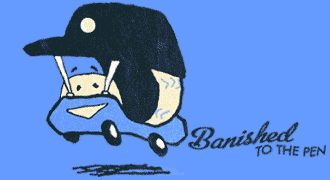Baseball is hard. Even for the players who play at the highest levels, the most talented men in the world, the challenge sometimes can be too much to handle. See, baseball is not simply a game built on skill. Perhaps more than any other sport, the game comes with a massive luck component. You can throw a perfect pitch and have the batter swing, hit it softly, and it dunk in for a cheap hit. Just ask Mariano Rivera about Luis Gonzalez. Conversely, a batter can hit a ball with the exit velocity of a .308 rifle and have it find a glove. Luck can last a few games, but usually one would assume talent prevails over a full season. Sometimes, that isn’t the case. Let’s take a look a few players who had down years in 2016 but for seemingly no reasons. Bounceback candidates, if you will:
Matt Holliday
The 36-year-old veteran righty just spent his seventh season with the Cardinals, if you can believe it. A lifetime .308/.382/.515 hitter just slashed .246/.322/.461 in 110 games this past year, easily the worst of his career. No longer what the game would call a young man, one might believe this is the beginning of the end for Holliday, but there are some underlying stats that would give you hope for a resurgence from the big righty.
Looking at batted ball data, we can see that Holliday just put up the lowest line drive rate (14.1%) and highest ground ball rate (50%) of his career. Now, for someone with his blazing speed, putting the ball on the ground that often is usually not a good thing.
Digging deeper, we see that Holliday pulled the ball more often than he has in his career (37.8% to 34.9%) and his ISO was .215, the highest it has been since 2011. This allowed Holliday to put up 20 dingers in just over 400 plate appearances. His BABIP also cratered to .253, 80 points below his career average. That could be attributed slightly to the ground balls, but it could also be attributed a bit to bad luck.
Hitting the ball hard is good, generally, so his 38.5% hard hit rate sitting a few points above his career average is nice moving forward, especially when the league average was 31.4%. You want exit velocity? Holliday was fourth in all of baseball last season, behind only Giancarlo Stanton, Nelson Cruz and Aaron Judge (he of the measly 95 PA).
Given all we know, and Matt Holliday’s track record, the Yankees probably feel pretty good about their $13MM bet.
Jon Gray
I know, I know. A pitcher who spends half of his games in Coors Field? Yikes. Obviously, you expect Gray’s home stats to be a little sourer than you’d like out of a stud pitcher, but everything is there.
A rookie in 2016, the former third overall pick struggled to a 4.61 ERA in 168 frames, but his FIP was a nice 3.60. A blazing fastball, and one of the game’s best sliders, ran Gray to a 26% strikeout rate, fourth best from a rookie this century and comfortably above the 21.1% league average.
Gray gets the ball hit on the ground at about an average rate, but he gets whiffs on 48.5% of his pitches out of the zone, more than 12 percentage points above the standard. That’s how you get to the ninth best swinging strike rate among qualified starters.
As a sophomore with a bit to improve upon in a severe hitter-friendly environment, Gray is a bit of a risk. But looking at everything he did as a rookie, you don’t see a pitcher with a 4.61 ERA. Expect quite a breakout, and less of a bounceback, from Gray in 2017.
Joe Panik
A first round pick in 2011, Panik burst onto the scene a bit in 73 games in 2014. He hit .305 with a .343 OBP and looked poised to be a potential All-Star at second base, showing great bat control and a decent eye, all while playing solid defense.
Panik continued to do really good things in 2015, posting a .312/.378/,455 slash line, a great showing for a light hitting position. He walked at a good clip and struck out around half of the league average (9.7% to 20.4%). A 136 wRC+ from a soon-to-be 25-year-old second baseman sounds like one heck of a building block for a contending team.
Only, 2016 wasn’t what anyone expected. Panik continued to trend positively in strikeout and walk rate, this time drawing more walks than strikeouts (55 to 47), but his slash line dipped to .239/.315/.379. A competent second baseman, sure, but he went from a 4-win season to a 2-win season in what should have been his budding prime. So what happened?
Panik’s BABIP dropped from .330 to .243 this past season. His line drive percentage dropped from 23% to 17.5%. His hard contact rate went from 30% to 25.6%. Mild regression, sure, but not enough to take a BABIP down 87 points. Panik still controls the strike zone exceptionally well and rarely swings and misses. He does all this while still rating as a slightly-above-average defender. He’s a useful player even at 2016 levels.
Don’t panic, expect some of his luck to return in 2017. Maybe 2015 was the outlier but it’s easy to expect some positive regression, and that’s still a nice player to have.
Robbie Ray
Call this an unintentional list of fantasy sleepers. Ray is already pretty well known in baseball circles for being a lefty that strikes out a ton (11.25 K/9 in 2016, second overall among qualified starters) and throws really hard (94.1 average fastball velocity, second only to Danny Duffy among left handed starters).
Ray, 25, has electric stuff and ace capability. Coming off of a season in which he had a 3.52 ERA, many expected his breakout this past year. Pitching is hard, though, and Ray struggled to a 4.90 ERA in 2016, albeit with a nice 3.76 FIP.
There are a few issues that need to be tightened up to reach his full potential, chief among them his walks (3.76 BB/9, almost 10% of batters faced). He also seems a bit hittable at times, so his command could use some work. His 36.6% hard contact rate was tied for second among starters (with Duffy, oddly enough), and his soft contact rate was sixth worse at 16%.
One cause of this may be Ray’s inability to throw his soft stuff in the zone, as he does so at only 33%. If hitters know anything that breaks isn’t going to be a strike, they can wait for the fastball in the zone. No matter how hard it is, they’ll catch up.
Despite the strikeout rates and the stuff, I’m not as bullish on Ray as the others on this list. I still think he can do it, and he’s only entering his age-26 season, his third as a full timer. There’s room for improvement and reason to believe he’ll make it. Just, try not to think of Michael Pineda when you think of Robbie Ray.
Next post: What Does the Smyly Trade Mean for the 2017 Rays?Previous post: Minor League Baseball in NYC




Leave a Reply